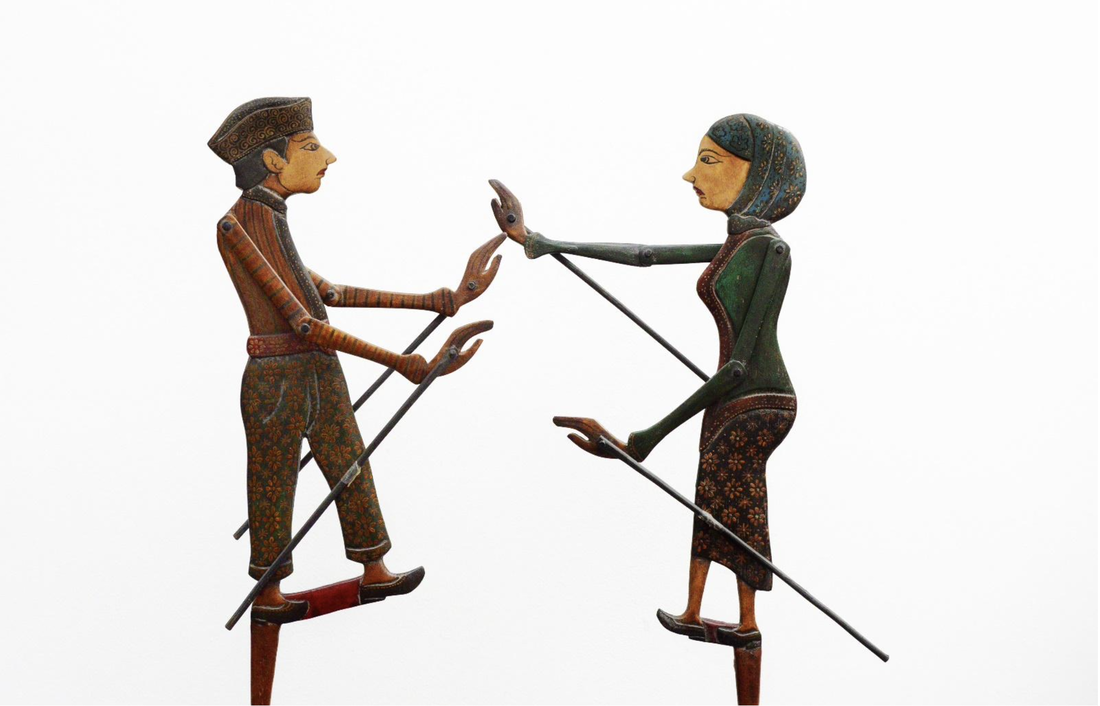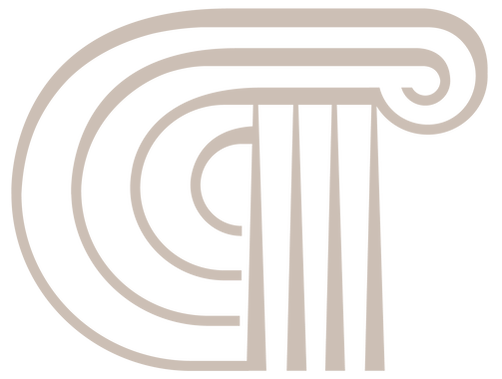WAYANG KULIT PUPPETS
Wayang Kulit Shadow Puppet
Period: 19th Century
Origin: Indonesia
Material: Paper,
Size: 11cm
Description:
The shadow puppets, or Wayang, of Bali, are known to be the most prominent Balinese theatrical expression. Bali's culture is derived from pre-Hindu, Hindu, and Islamic influences. The wayang theater preserves the country's Gubdy-Buddhist heritage. The plays are usually based on stories drawn from the Ramayana and Mahabharata Hindu epics. They communicate Bali's history, religious and spiritual teachings, poetry, and philosophy. The characters are demi-gods, demons, magic men, and romantic lovers.
There are many different stories past through generations by the puppet theater. The night performances of the wayang are for entertainment. A translucent rice paper screen is backlit by flickering candles or a coconut husk oil lamp. Religious performances take place during the day. Often these performances will occur during, or prior to a ceremony of religious significance. Only one puppeteer, called a dalang, puts on a performance.
This person, often a priest, is a person greatly respected in his community. The dalang must be a very well educated and talented individual as his responsibility is vast. The rods of at least 20 wayang figures are manipulated as the dalang chants or sings his narration. He is accompanied by an orchestra of 4 metal keyed instruments that sound like fairies (gamelan orchestra). The daland cues the orchestra with his feet while he improvises a complex network of intrigues from a simple plot. He must be able to produce a different voice for each character as well as to physically endure an all-evening performance. He is a master storyteller, a philosopher, a poet, an actor, and a teacher.
It is said that the dalang is the greatest educator of the people. The wayland serves to communicate the history, ideas, and principles of their culture. It pulls the Balinese together as a community and gives people an opportunity to view themselves "through the mirror of the mystic history; to view their current situation through a timeless perspective" (Shadow Light). Some of Main Wayang Kulit Characters:
- Citraksa
- Ghatotkacha
- Cepot
- Citraksi
- Hanuman
- Semar
- Arjun
- Ravana
- Rama
- Pandava
- Bishma
ID-WP-001
Period: 19th Century
Origin: Indonesia
Material: Paper,
Size: 11cm
Description:
The shadow puppets, or Wayang, of Bali, are known to be the most prominent Balinese theatrical expression. Bali's culture is derived from pre-Hindu, Hindu, and Islamic influences. The wayang theater preserves the country's Gubdy-Buddhist heritage. The plays are usually based on stories drawn from the Ramayana and Mahabharata Hindu epics. They communicate Bali's history, religious and spiritual teachings, poetry, and philosophy. The characters are demi-gods, demons, magic men, and romantic lovers.
There are many different stories past through generations by the puppet theater. The night performances of the wayang are for entertainment. A translucent rice paper screen is backlit by flickering candles or a coconut husk oil lamp. Religious performances take place during the day. Often these performances will occur during, or prior to a ceremony of religious significance. Only one puppeteer, called a dalang, puts on a performance.
This person, often a priest, is a person greatly respected in his community. The dalang must be a very well educated and talented individual as his responsibility is vast. The rods of at least 20 wayang figures are manipulated as the dalang chants or sings his narration. He is accompanied by an orchestra of 4 metal keyed instruments that sound like fairies (gamelan orchestra). The daland cues the orchestra with his feet while he improvises a complex network of intrigues from a simple plot. He must be able to produce a different voice for each character as well as to physically endure an all-evening performance. He is a master storyteller, a philosopher, a poet, an actor, and a teacher.
It is said that the dalang is the greatest educator of the people. The wayland serves to communicate the history, ideas, and principles of their culture. It pulls the Balinese together as a community and gives people an opportunity to view themselves "through the mirror of the mystic history; to view their current situation through a timeless perspective" (Shadow Light). Some of Main Wayang Kulit Characters:
- Citraksa
- Ghatotkacha
- Cepot
- Citraksi
- Hanuman
- Semar
- Arjun
- Ravana
- Rama
- Pandava
- Bishma
ID-WP-001




